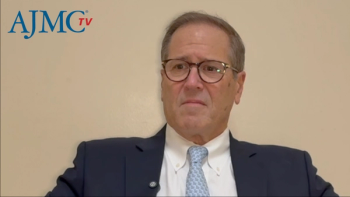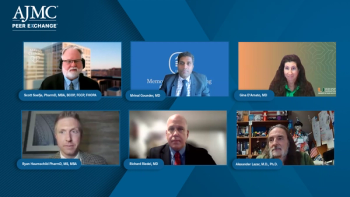
Patient-Reported Outcomes and Oral Oncolytics
In terms of coverage decisions, Dr Kiss, vice president, healthcare transformation, Blue Cross Blue Shield of Florida, believes that “in oncology, the payers follow FDA.” For oncology, FDA approvals and thus payer coverage decisions are now starting to focus on patient-reported outcomes.
Collaborative programs, such as accountable care relationships and value-based relationships, are beginning to include patient-reported outcomes in their bonus payment agreements. However, these metrics are often defined differently from one system to another, and usually take a back seat to more straightforward measures such as keeping patients out of the emergency department, according to Dr Feinberg, vice president and chief medical officer at Cardinal Health Specialty Solutions. Even though they are not called patient-reported outcomes, since they are not direct patient reports, “It really is a great measure of quality of life,” Dr Feinberg points out. It speaks volumes if a patient can remain home, and work if they have a job, instead of being in the emergency department or hospital.
When working with the provider, Dr Kiss stated that while working independently with each of our systems, they also rely on provider systems where they take those data and report on them. “We really want to develop these in collaboration with the people taking care of the patients,” he stressed.
Although oral oncolytics can be a flexible and convenient option for patients, they are not always preferred by patients. A few years ago, Dr Feinberg was surprised that patients did not embrace orals, for various reasons: “They enjoyed coming to the office [for their infusions]; they had greater confidence if I injected it in their vein: ‘It’s going to do more than just a pill,’ they would tell me.” Both panelists believe that patient perceptions of the intravenous medications being more potent than orals could be problematic. Furthermore, an oral oncolytic is not necessarily less toxic or safer than a systemic cancer agent. Several oral oncolytics are not being tolerated by patients, Dr Kiss agrees, resulting in a frequent termination of care.
Dr Kiss asks whether the role of oral agents could actually be palliative when a cure or life extension for the patient is not feasible—how do you assess the palliative effect of a drug that reduces tumor burden and may alleviate pain over time? These are other patient-reported metrics focused on end-of-life care are only beginning to be considered.
Newsletter
Stay ahead of policy, cost, and value—subscribe to AJMC for expert insights at the intersection of clinical care and health economics.













































